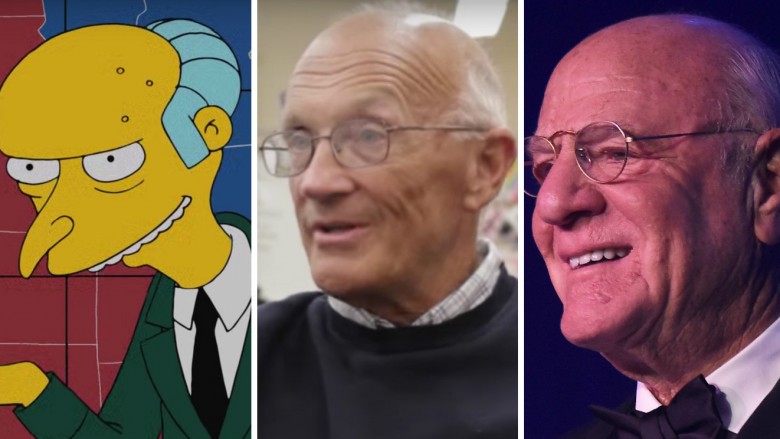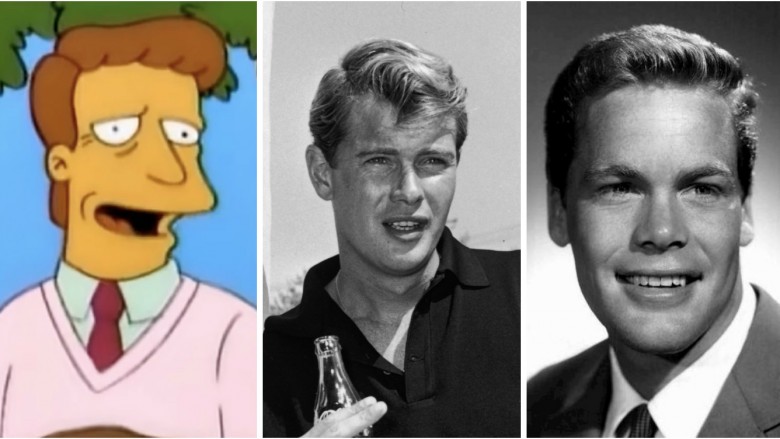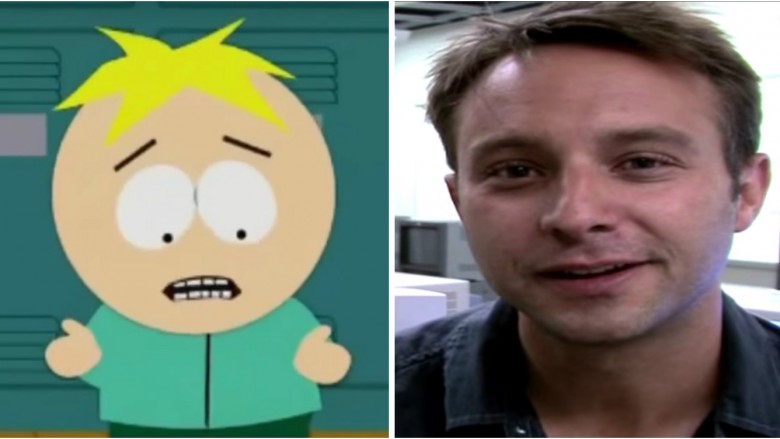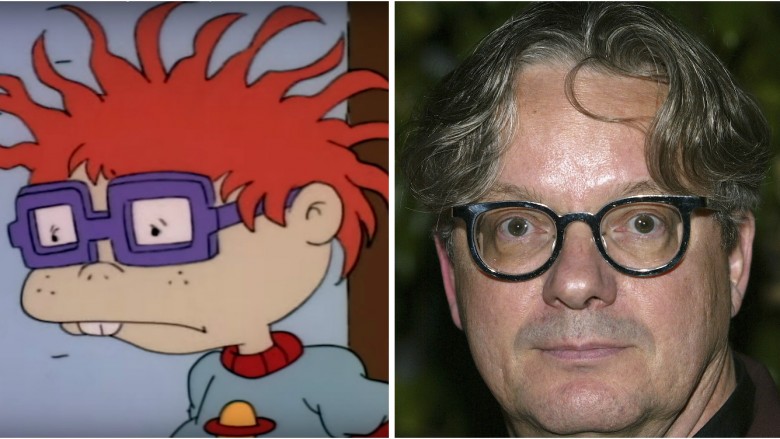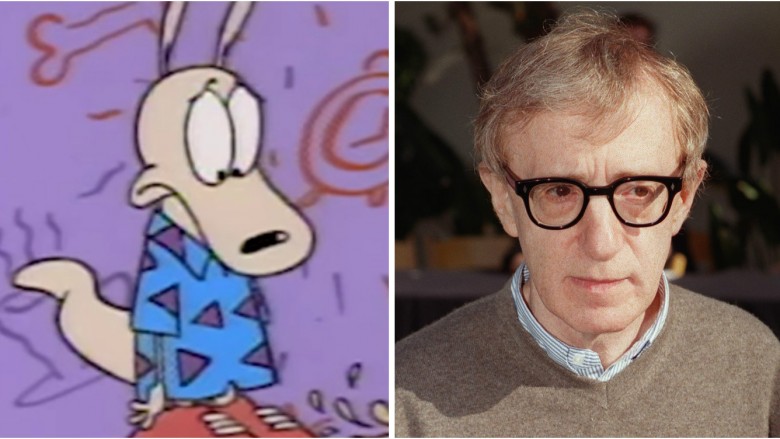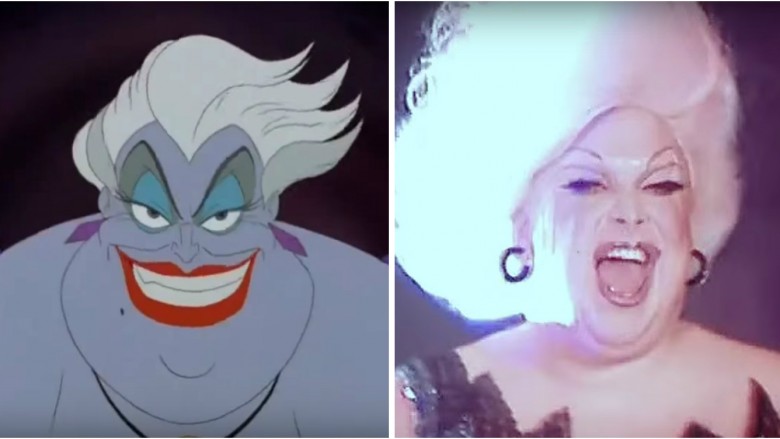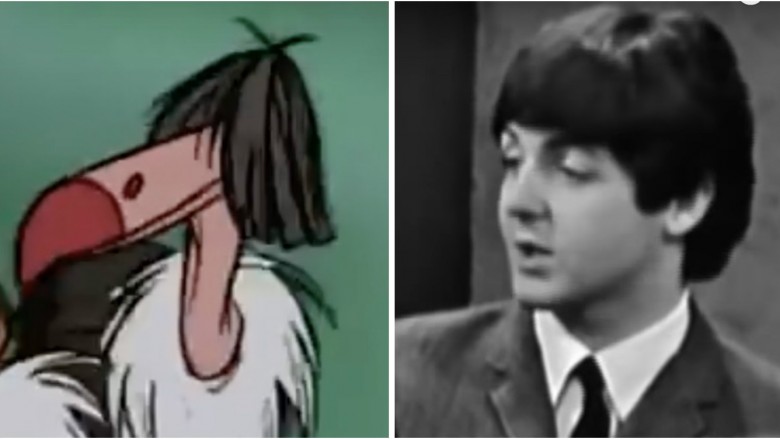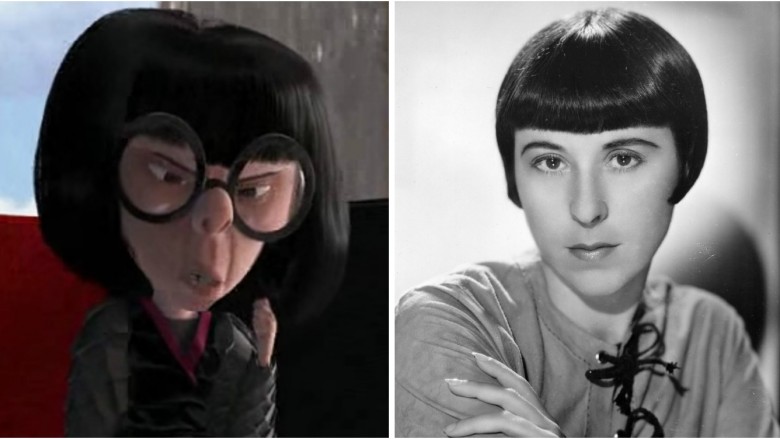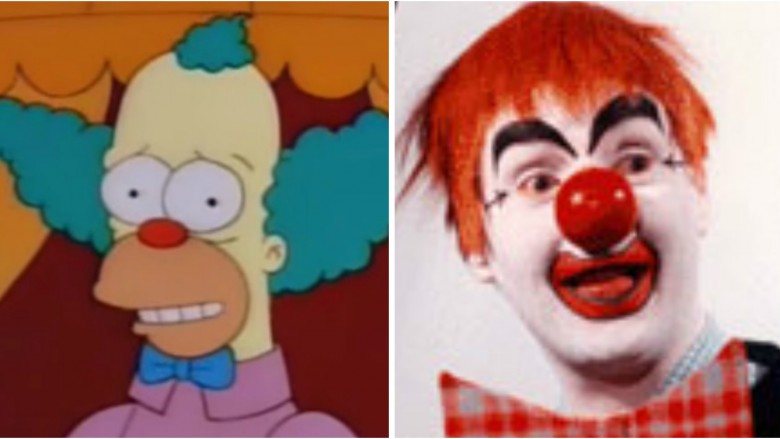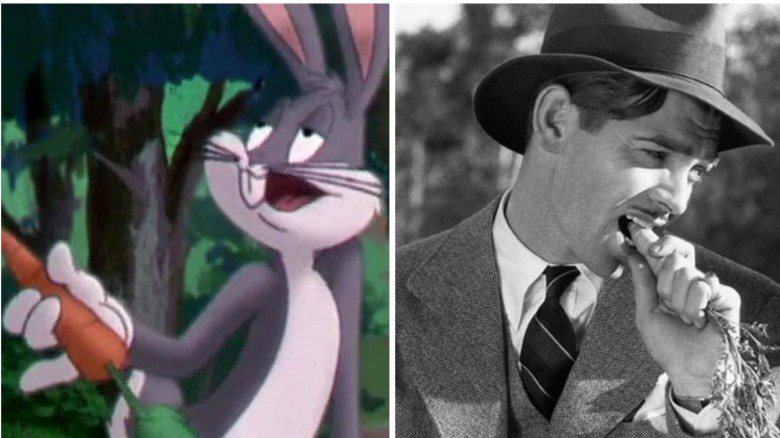Cartoon Characters You Didn't Know Were Inspired By Real People
Cartoon characters obviously aren't real, but they can feel just as fully developed as any flesh-and-blood human being—and in some cases, there are some very good reasons for this. As it turns out, some of animation's most memorable characters seem like real people partly because their personality traits and antics really were actually inspired by the stories of real-life people. From classic animated movies to your favorite TV 'toons, there's a rich tradition of animators basing characters on flesh and blood individuals—and in some cases, those characters ended up resonating so strongly with the audience that they became fixtures on the shows. While their animated adventures may have been more (ahem) colorful than the truth, these film and television icons never would have been drawn in the first place without the people who inspired their creation—sometimes unwittingly. Here are a few memorable examples of beloved cartoon characters and their real-life counterparts.
Mr. Burns from The Simpsons
It took a little bit of a lot of fearsome individuals to add up to the most evil man in Springfield. Simpsons creator Matt Groening says he got Burns' demeanor and some of his appearance from David Bailey, his high school math teacher from Portland, Oregon. (Bailey says Groening was a class clown with whom he "locked horns.") Then he added in a little bit of Standard Oil tycoon John D. Rockefeller so as to give Burns the motivation of money as well as "the embodiment of corporate greed." When it came time to render him in cartoon form, animator David Silverman took other inspirations: the body of a praying mantis, and the head and face of Barry Diller—the founder of Fox, The Simpsons' network.
Troy McClure from The Simpsons
Hello, he's Troy McClure. You might remember him from The Simpsons as an actor and heartthrob well past his prime who can only get work in B-movies, educational films, and infomercials. His name combines two hunky actors who've been largely forgotten: Troy Donahue and Doug McClure. Simpsons writer Mike Reiss revealed on a Simpsons DVD commentary track that he met McClure's daughter, who told him her dad figured out they were making fun of him...and that his kids called him "Troy" when he wasn't in the room.
Butters from South Park
Eric Stough has been helping make South Park since the early 1990s, when it was just a couple of crudely animated Christmas-themed shorts. Today, Stough still works for Trey Parker and Matt Stone—whom he's known since middle school—as the animation director for the long-running series. Another indelible contribution to the show: He's the inspiration for the sweet, naïve, innocent, and incredibly unlucky Butters Stotch. Stough says he's almost as agreeable as Butters, and had a similar strict upbringing. The other South Park guys once nicknamed him Little Brother, which evolved into Little Buddy, then Budders...then Butters.
Chuckie from Rugrats
While he still might be best known as the frontman of forward-thinking rock band Devo, Mark Mothersbaugh is now one of the most sought after film composers working in movies and TV—his credits include The Royal Tenenbaums, Rushmore, Regular Show, and Rugrats. Not only did he create the show's memorably weird synth and vocal-based underscores, but his unique personal style inspired the design of Chuckie, one of the show's lead characters. "We both had thick glasses. We're both near-sighted. And I had pretty wild hair back then," Mothersbaugh explained. "I didn't have kids yet, so it still had color in it."
Rocko from Rocko's Modern Life
Rocko is anxious, overwhelmed, and out of step with the world around him—just like the stock male character in a number of Woody Allen movies, often played by Allen himself. In his pitch to Nickelodeon, Rocko's Modern Life creator Joe Murray described his title character as "a young, anthropomorphic Woody Allen, who has just moved away from home into a surrealistic adult world." The major difference is that Rocko doesn't comment on the craziness of the world around him as much as Allen's characters do. (Also, he's a wallaby with an Australian accent.)
Popeye
The tough-as-nails tattooed sailor man with a soft spot for Olive Oyl and a nearly incoherent speaking voice—and who obtained superpowers upon eating spinach—debuted in the comics section of newspapers in 1929. Cartoonist E.C. Segar had a strip called Thimble Theatre. Various characters came and went in Thimble Theatre since Segar had created it in 1919—so it took him 10 years to come up with Popeye. The inspiration had been right in front of him: in his hometown of Chester, Illinois, there was a townie named Frank Fiegel who everybody called Rocky. He was a part-time bartender who always had a pipe in his mouth and who was "tall, strong, always ready for a fight."
Ursula from The Little Mermaid
The villainous sea witch in the 1989 Disney classic is so bold, so audacious, and so over the top—there's almost a cabaret or "drag club" quality to the character. That's no accident. The character was inspired by Glenn Milstead, better known as Divine, star of John Waters's Pink Flamingoes, Hairspray, and Polyester. Little Mermaid lyricist and producer Howard Ashman knew Divine, having once frequented the same underground club scene in Baltimore. After looking at a bunch of concept sketches of Ursula, Ashman saw one he liked: a large, glamorous woman. Ashman worked with artist Rob Minkoff to make some changes to what first looked like a "Miami Beach matron," adding in a shark tail, shock of hair, a ton of eyeshadow, and other features that made Ursula look almost exactly like Divine.
The vultures in The Jungle Book
There weren't any singing vultures with Liverpool accents in the original Jungle Book published by Rudyard Kipling in 1899. For the classic 1967 Disney animated adaptation, the idea was suggested by Richard and Robert Sherman, longtime Disney staff songwriters who convinced the producers to hire the Beatles to voice the characters. Richard Sherman later said John Lennon wasn't interested, so the plan fell through. "John was running the show at the time," explained Sherman, "and he said, 'I don't wanna do an animated film.' Three years later they did Yellow Submarine, so you can see how things change." Nevertheless, the vultures were still animated with mop-top haircuts reminiscent of the ones sported by the Fab Four in the early '60s. (When Jon Favreau put together his live-action version of The Jungle Book in 2016, he asked surviving Beatles Paul McCartney and Ringo Starr to cameo, but they both said no.)
Edna Mode from The Incredibles
The superhero suit designer Edna Mode ("no capes!") from this Pixar superhero sendup has very strict, uncompromising views on fashion— exactly like the character's inspiration, legendary Hollywood costume designer and eight-time Oscar winner Edith Head.
Krusty the Clown
In the early days of television, hundreds of local TV stations had their own kids' shows. From their studio, an actor or station employee would dress up like a pirate, cowboy, or clown, for example, and then maybe lead a studio audience of kids in a game or two and then throw to an old cartoon. In Portland, the local kiddie TV show host was a guy named James Allen, better known as Rusty Nails, who had a show on Saturday mornings from 1957 to 1973. Simpsons creator Matt Groening grew up in Portland and watched the show as a kid, and created Krusty the Clown in honor of Rusty, although he says Rusty wasn't nearly as surly and disenchanted.
Bugs Bunny
Sure, rabbits both real and fictional like to eat carrots. But the reason Bugs Bunny eats carrots—along with some other of his steadfast mannerisms and personality traits—has more to do with classic Hollywood movie star Clark Gable. Probably best known today for his role as Rhett Butler in 1939's Gone With the Wind, Gable won the Academy Award for Best Actor for the 1934 comedy It Happened One Night, portraying Peter Warne, a sarcastic and scrappy unemployed newspaper reporter.
In one scene, he and an heiress (Claudette Colbert) are stranded on the side of a country road. Gable as Warne leans up against a fence, munching on a carrot. He also talks out of the side of his mouth while chewing, both behaviors cartoon maker Friz Freleng admitted lifting when fleshing out the character of a sarcastic and scrappy cartoon rabbit. Freleng also got the name Bugs from It Happened One Night—it's the name of a hitman Gable's character mentions.

